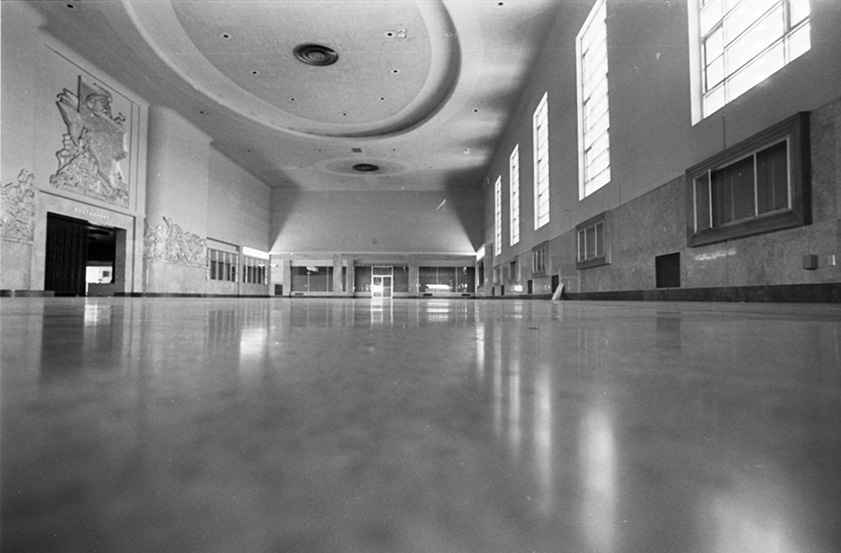Driving down Amon Carter Blvd on the eastern tip of Fort Worth, Texas, feels like navigating any other part of the DFW Metroplex. From north to south, the road slices through an industrial park housing major companies like Amazon, NBC, Cintas, and Bank of America. But if you traveled this route 50 years ago, you would have been driving down Runway 17—a 9,000-foot runway that stretched over US Highway 183 (Airport Freeway) and into what is now DFW Airport.

Runway 17 was one of three runways at Fort Worth’s short-lived Greater Southwest International Airport (GSW). This airport operated for nearly 21 years before closing approximately three months after DFW Airport opened. So, why did GSW fail? To understand, we need to journey back to the 1920s, guided by images from the Fort Worth Star-Telegram Collection.
Regional Airport Idea
The idea to build a regional airport to serve Dallas and Fort Worth began in the early 1920s, almost two decades after Orville Wright’s first controlled flight in 1903. Following the end of World War I in 1918, the Roaring Twenties began. From 1920 to 1930, both Dallas and Fort Worth saw dramatic population increases. Dallas’s population grew from 158,976 in 1920 to 260,475 in 1930. Fort Worth experienced similar growth, with its population increasing from 106,482 to 163,447 during the same period.

In the early 1920s, Fort Worth began planning to create a regional airport on the eastern end of Tarrant County to serve both Fort Worth and Dallas. However, Dallas showed little interest in this plan. Instead, in 1928, Dallas purchased Love Field, which had been a military airfield during World War I.
Construction on site begins in the 1930s
In the 1930s, Dallas finally agreed to split the cost and tax revenue for the regional airport, partly due to the Great Depression, which began in 1929 and lasted until World War II. Construction began in the mid-1930s, with plans to secure funding from the newly established Works Progress Administration by the Roosevelt Administration. However, Dallas withdrew from the project when the terminal was planned to be closer to Fort Worth.
Arlington Municipal Airport (Midway Airport)
When Dallas withdrew from the project, Fort Worth resumed construction of the airport. Construction continued during World War II, and the airport was identified as Arlington Municipal Airport (Midway Airport).
Amon Carter Field
After the war, Fort Worth annexed the site, renaming the airport Amon Carter Field in 1950. Construction continued, and by late 1952, the terminal was complete. On April 25, 1953, the airport was officially opened.





Greater Southwest International Airport (airport code “GSW”)





DFW Tunnel On Texas State Highway 183
In the late 1960s, Runway 17 was extended north over Texas State Highway 183. The highway was rerouted, and an 800-foot tunnel was constructed at a cost of approximately $3 million (about $25 million today). The tunnel was demolished in the late 1980s due to traffic congestion.


Dallas-Fort Worth International Airport
In the 1960s, the Federal Aviation Administration (FAA) required Dallas and Fort Worth to develop a plan for a regional airport, announcing it would no longer fund both Greater Southwest International Airport (GSW) and Love Field. The land just north of GSW was selected in 1965. Construction began in 1969, and in 1974, DFW opened as Dallas Fort Worth Regional Airport.




The Decline and Closure of GSW
In 1969, commercial flights ceased, with American Airlines being the last carrier to fly from GSW. The airport never reached full capacity. It remained open for almost five more years as a training facility for American, Braniff, and Delta but closed in 1974. A developer purchased GSW in 1979.



Location Today
Today, all that remains of GSW is a section of Runway 17 to the north of Texas State Highway 183. The rest of the area is now almost fully developed with new commercial and residential buildings, such as Hanger 19.
Images from Fort Worth Star-Telegram Collection, University of Texas at Arlington Libraries
Last Updated on May 16, 2024 by F. E. Mufute



